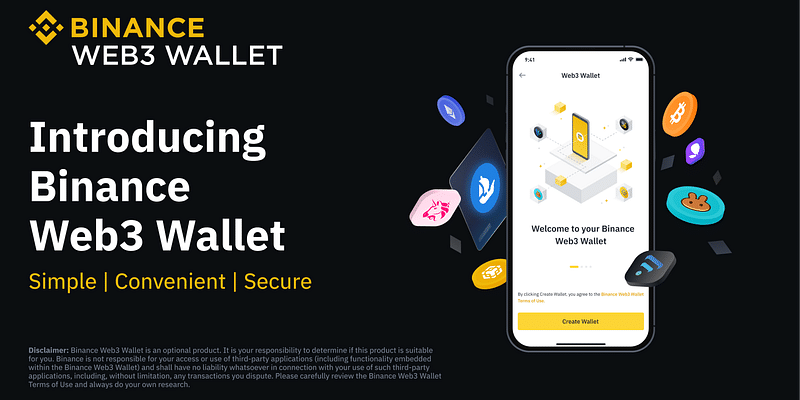
Digital wallets have undergone a transformative journey, evolving through different generations to meet the changing needs of users. The inception of Web1 wallets marked a simple yet revolutionary phase, primarily facilitating the storage of payment information for online transactions. The subsequent era of Web2 witnessed a significant leap, as digital wallets became more sophisticated, extending their capabilities to manage diverse digital assets, including loyalty points, gift cards, and boarding passes. However, the pivotal drawback persisted – centralization, where user information was entrusted to a single entity.
With the advent of blockchain technology and the surge in popularity of Virtual Digital Assets (VDAs), digital wallets underwent a 360-degree change. Unlike their predecessors, contemporary digital wallets, or Web3 wallets, empower users with unprecedented control over their assets. This revolutionary shift allows users to engage in secure, peer-to-peer transactions without the need for intermediaries.
What is a Web3 wallet?
A Web3 wallet, at its core, is a digital wallet designed to interface seamlessly with the decentralized web. Decentralized web includes a whole host of applications (or dApps) that allows users to operate in a decentralized and community-driven manner. Wallets leverage blockchain technology to enable users to securely store, manage, and transact with various VDAs. Unlike its traditional counterparts, a Web3 wallet grants users ownership of their private keys, enhancing security and providing a gateway to the burgeoning world of dApps including decentralized finance (DeFi).
What sets a Web3 wallet apart is its commitment to user-friendliness and accessibility. These wallets are meticulously designed to provide seamless access to blockchain networks, eliminating the need for extensive technical knowledge. In embracing the ethos of decentralization, Web3 wallets represent a pivotal step towards a future where users wield unprecedented control over their digital assets.
Decentralized identity and the benefits of user-controlled data:
A key concept underpinning Web3 wallets is decentralized identity. This paradigm shift allows individuals to control access to their personal information, reducing the risk of data breaches and identity theft. Users can now interact with online services without compromising their privacy, as data is stored and managed on decentralized networks, putting the power back into the hands of the users.
One of the primary attractions of Web3 wallets is their robust security features. Private key ownership, encryption, and secure key recovery mechanisms are among the tools that safeguard users against common security risks such as hacking and phishing attacks. The decentralized nature of Web3 wallets also mitigates the risk of a single point of failure, making them more resilient to malicious activities.
Web3 wallets and the road to compliance
As the adoption of Web3 wallets gains momentum, it is crucial to address regulatory considerations. The decentralized nature of these wallets may pose challenges in terms of compliance, but it also opens up avenues for innovative solutions that align with existing regulations.
Addressing scalability concerns is imperative for the future of UPI systems, considering the potential influx of crypto enthusiasts and natives. The integration of growing Fintech stack and VDAs can help streamline Web 3 adoption, making it easier to purchase VDAs with fiat and boosting the adoption of DeFi platforms.
Binance Web3 Wallet: Redefining Web3 with simplicity and security
Binance, as a leading blockchain ecosystem and VDA infrastructure provider, recognizes the importance of Web3 technologies and their role in the future of DeFi. The Binance Web3 Wallet is a revolutionary tool designed to bring simplicity, convenience, and security to users entering the decentralized world with confidence. This wallet redefines simplicity by allowing users to create their wallet easily, eliminating the complexity of seed phrases while maintaining the benefits of security and self-custody.
Seamlessly connecting with the global Binance Exchange platform, the Web3 Wallet offers an all-in-one convenience, enabling effortless fund transfers and token swaps across various networks at competitive rates. Users can immerse themselves in the world of NFTs or explore opportunities to earn yield on their assets, all within the Binance Web3 Wallet, without the need to exit the wallet.
Rachel Conlan, Chief Marketing Officer at Binance, commented “In the world of wallets, while user-friendliness remains crucial, security has taken precedence like never before. Implementing extensive security measures can sometimes impact the user experience. Our goal for the Binance Web3 Wallet is to harmonize both security and user-friendliness.”
Binance Web3 Wallet introduced cutting-edge multi-party computation (MPC) technology, ensuring enhanced protection with three separately stored key-shares, each in different secure locations, including personal cloud storage and user devices.
Beyond its highlighted attributes of simplicity, convenience, and security, the Binance Web3 Wallet boasts distinctive features that distinguish it from the rest. Upon setting up and utilizing this wallet, users can anticipate a range of benefits.
Optimal rate swaps: Integrated with Binance Bridge, the wallet enables efficient token swaps across multiple chains, eliminating the need for platform-hopping for the best rates.
Earning opportunities: Beyond swapping, users can earn yields through staking, lending, and innovative financial instruments, optimizing their digital assets.
Self-custody empowerment: The wallet empowers users with exclusive access and full control over their funds, emphasizing self-custody. However, it’s essential to note the responsibility that comes with this control.
Curated dApp selection: Binance ensures a curated selection of reputable and secure decentralized applications, offering users a reliable exploration of the Web3 landscape.
Built-in risk controls: Equipped with alerts, the wallet notifies users of potential security risks, enhancing its role in safeguarding against threats.
Harmonizing CeFi and DeFi: Bridging centralized and decentralized finance, users can seamlessly toggle between both ecosystems, experiencing the strengths of both worlds on a unified platform.
Customer service accessibility: Users enjoy 24/7 customer support, a unique advantage in the Web3 Wallet space, ensuring a smooth experience with reliable assistance whenever needed.
Future trends in Web3 wallets
As the Web3 landscape continues to evolve, several trends are emerging. The rise of Web3 wallets signifies a paradigm shift in how individuals engage with finance and technology. The decentralized, user-centric nature of these wallets offers a glimpse into a future where individuals have greater control over their digital lives. Improved user experiences, enhanced interoperability between different blockchain networks, and the integration of artificial intelligence are just a few of the directions in which Web3 wallets are heading. Binance, as a forward-thinking player, is likely to play a pivotal role in driving these trends and shaping the future of Web3 technologies.


![Read more about the article [Funding alert] Data security startup Seclore raises $27M; VenturEast exits with 17.5X return](https://blog.digitalsevaa.com/wp-content/uploads/2022/02/funding-1645511711142-300x150.jpg)







